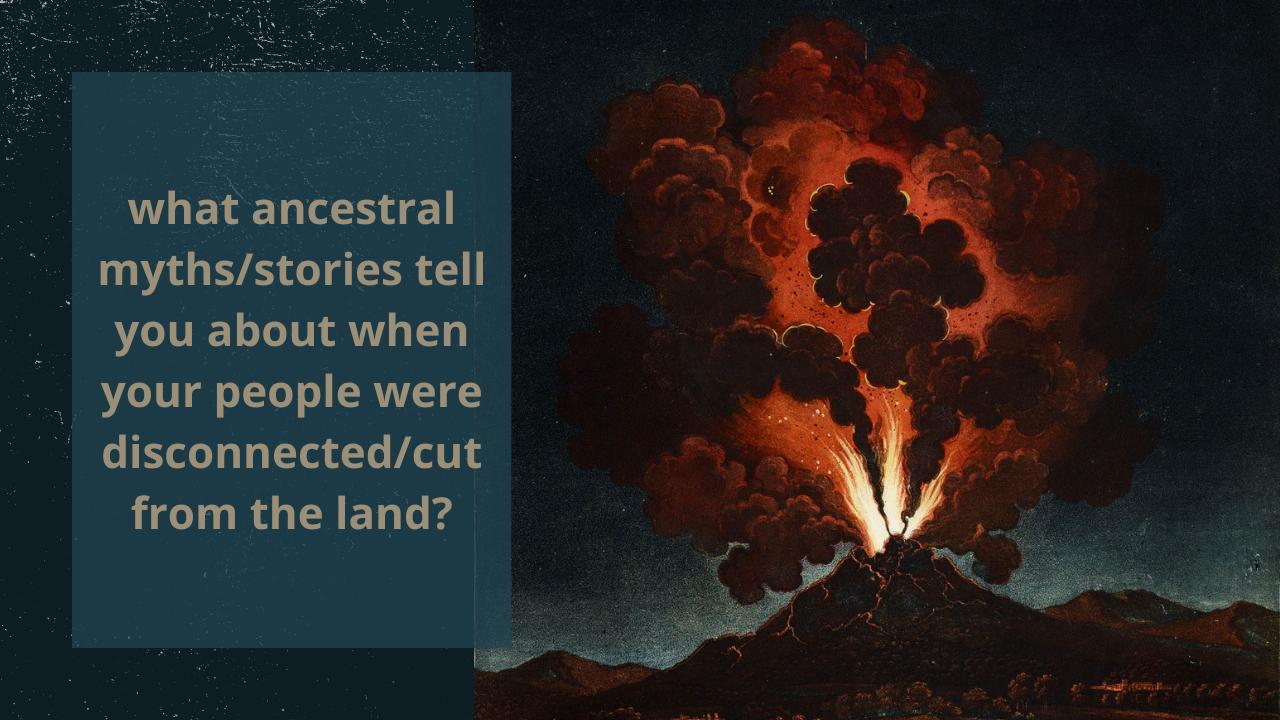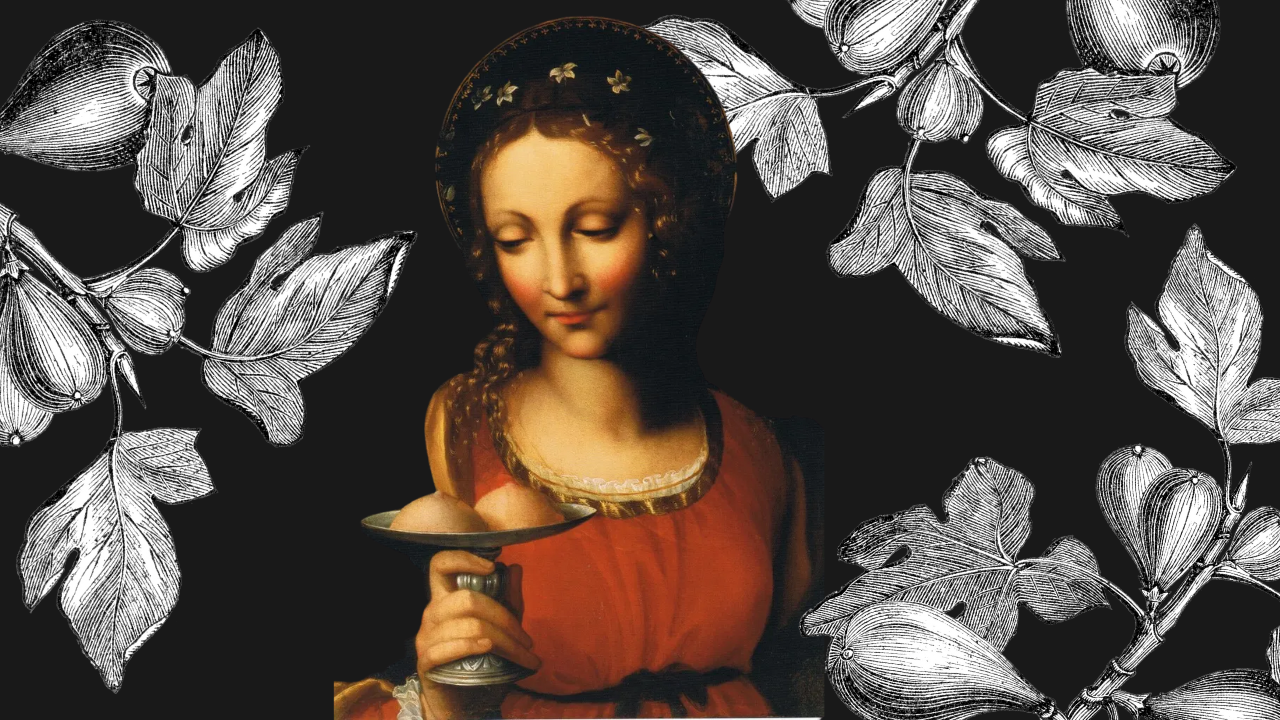Sant'Agata + Etna Volcano: Nourishment Severed

A couple weeks ago I was telling my 80-something year old Sicilian- born Italian language teacher about my travels to Sicily. Every time I talk with her about my pilgrimages to Sicily — she cries. She left the island as an 18 year old and though she’s been back to visit, in her older years she hasn’t been able to travel there. In the middle of me telling her what magic we made on Sicily this time around, and in the middle of her crying about it all, she suddenly breaks into a song:
Di Mungibeddu tutti figghi semu | terra di focu, di canti e d'amuri | st'aranci sulu nui li pussidemu | e la Sicilia nostra si fà onuri | E di luntanu venunu li furasteri a massa | dicennu la Sicilia chi ciauru ca fà | L'oduri di la zagara si senti | e riturnau la bedda primavera | rosi sbucciati, lu suli cucenti | Sicilia bedda tu si 'na ciurera | Chi ciauru, chi ciauru di balucu e di rosi | evviva la Sicilia e l'abitanti sò.
She said she sang this in Sicily when she was little — and that it was meant to sing to the volcano. She really wanted me to know the name of Etna, referred to here in its Sicilian name (mungibeddu) means to “to squeeze” or as she tried to explain to me— “to milk” — like a person milks a goat (beddu means beautiful, so broken literally means: beautiful squeeze). She said: “like we squeeze a goat for milk to come out and to nourish us, the volcano squeezes and milks herself, her lava shoots out and is nourishment for the land”. I have known the name Mungibeddu for a long time, but I always thought it just meant a beautiful mountain. Vita, my wise elder teacher said, it does mean that, but the word mungi literally translates down to an act — a squeeze. Eruptions of volcano “milk” that bring the land life and vitality and flavor.
I found this insanely profound and beautiful, and emotional. Of course I start to cry and ask her to sing it again and let me record her singing it (she said no, that her “voce ė male” which of course is the farthest thing from the truth).
I left our conversation thinking, what a gorgeous way to be in a relationship with the volcano. To see it as a large breast nourishing the land. Like a mother. Etna is their mother. I know young people, younger than me, who still kiss the land, saying they are kissing their mother, anytime they are in the vicinity of the volcano.
Instead of the volcano being something to fear, or to conquer, or to run from, it was named as something that was an act of nourishment. A milking. A feeding. So citrus, nuts, olives, grapes can grow. A feeding of soil so the plants and fungi that the livestock eat while grazing can flavor their milk which flavors the cheese with the flavors of the land, which is in essence, the flavor of the lava. A feeding in a way so that all things we love can continue to grow well on Sicilia. We love the wine. So we must love the Volcano, too.
I started thinking from a non-Sicilian lens (because that is my lens as an American) how volcanos, in general, for those of us not used to living under volcanoes and / or colonizers and those who were removed or left or taken from or had to leave their ancestral lands) have transformed their view of volcanoes under our idea of whiteness and separation from the land- not as beautiful mother breasts of nourishment, but large beasts to be avoided, be in fear of, and to conquer and disconnect and to save ourselves from. No longer in mother child relationship.
For Sicilians, Etna was a large mother, spewing out red hot milk, the pressure and tension from the inside squeezing herself open — to feed the land. What beautiful, sensual, unconditionally generous way to be.
The first line in the song translates to something like: we are all the children of this volcano.

Sant’Agata (Saint Agatha) was born in the city of Catania, Sicily and is the patron saint of Catania. Catania is a stunning and briny city that smells like fish and that dwells right under Etna Volcano. So Sant’Agata, Catania, and the volcano are in deep connection. Sant’Agata has a pretty torturous mythology. Basically as so many female Catholic saint martyrdom stories go — Agatha did not want to marry some man, whose name was Quintianus. and so she was captured and and imprisoned in a brothel where she was tortured.
Her breasts were cut from her — and as some myths explain, they grew back once before they were crushed and cut off again (this might be pointed to the serpent energy of the volcano and of Agatha. Serpents regenerate, as did Agatha’s breasts and in ancient mythology the spirit of the snake dwells within the volcano).
It was also said that Agatha was able to cause an eruption to interrupt her torturers, and so therefore she has the power both start and to stop eruptions when petitioned. That being said, in my own research and listening to the stories of those from that area, people did not really try to stop eruptions. They saw the eruptions as gifts from the volcano, and a very important role was each eruption to re-balance the earth, the soil, the people. As a matter of fact, in my research, those living in the path of the volcano tended to lay out offerings for the volcano on its pending eruption; wine, bread, flowers. Before leaving, the table would be set so the volcano lava would feel loved and welcomed.
Sant’Agata eventually died from being tortured. She has many layers of story and I do suggest diving in to read about her if you are interested, and maybe even begin devotional to her, as her connection with our bodies and agency, self-expression, and fertile land are irrefutable. But what you will find more than anything else, is her fame around her severed breasts, her connection to Etna, and her resiliency.
Breasts, of course, are symbols of the womens/ mother’s nourishment, as well as being seen as sexual, sensual parts of the body. We really cannot separate nourishment and sex. They are both needed to carry on life, are deeply intertwined with the wild nature of humans and animals, and of course with the land.
If we can contemplate that her breasts could be an actual symbol of the land, specifically the volcano, and their severing and being plated, perhaps we can sink into a whole new understanding, or grappling or living question with the Etna and Agatha connection. With the land body connection. With the separation of land and body, land and people. Maybe we can look to this as mythology less about a Catholic martyr (though we cannot separate her from that either) and more about a symbol of disconnection to the land and to the nourishing body with agency all of its own.
Agatha is possibly not only the symbol of the volcano as a form of nourishment, but also a symbol of the severing from that nourishment.
A myth, a story, about our relationship to soil, volcanoes, fire, fertility, as a being, as a mother, as a sensual sentient being. About how the story shifts from the nourishing breast volcano (the top of a volcano does resemble the shape of a breast), to the scary beast, an entity needing to be controlled, conquered, severed — cut from— from the self, from the land.
Bare with me, here. I have no answers. I am no Catholic scholar or mythologist. I am just living in the practice of questions when they come through me.

I am not trying to re-myth any Agata. Just connect some of the dots. Just listening to my own body when my Italian teacher began singing that song, explaining to me the meaning of the word.
I have no interest in bypassing these Catholic myths and making them something they are not. They have been held and carried by so many people, and so many before them. There has to be wisdom within them, they are still living, breathing, existing… for a reason. I thank my catholic ancestors from this volcanic land for carrying them sacred.
Could this be one of our ancestral stories to show us where and how we have been disconnected from the body/land? A myth to show us that our hate towards nature and the nourishment of the body (both sexually and nutrient-wise, and specifically the women’s body) has a story? A warning? A marking in time/place, again and again?
Do we have our own ancestral myths already right there waiting for us?
If you travel to Catania, you can delight yourself in the sweetest of pastries, made with sheep or goat milk ricotta, that are literally shaped like Sant'Agata breasts. The soft cheese involved in this pastry, if made well, tastes like the land of the volcano. Traces of lava, of citrus, of pistacchio). They are what is left for us, to eat. Kinda like some kind of reparation gift. Eat these now. Sorry we cut them off of you, but in order to control you, we need you to not be in kinship with this land.
My point here is that the volcano was and still is a source of nourishment for the land.
This is something that cannot really be unknown. This is fact.
But there has been an illusion of disconnection. And I stress illusion.
We all know that we are not in the same relationship with the land as our ancestors were. But, it is an illusion. Her breasts grew back even when they were cut. Over again. We keep being born. We keep remembering. Our remembrance can still be fertilized by myth, by volcano, by milk, by a saint. In this moment, we can remember, there is no disconnection. It is impossible.

At least I think it is. Contemplating it re-shapes me. And re-earths me.
When we can dance throughout time and just create space to contemplate our myths, perhaps we can understand, and practice a slow, but sure reconnection.
What myths do you pass by because you think they don’t matter anymore?
What parts of you remember the deep connection with your ancestral lands? With the land you live on now?
Can you find the stories that are trying to tell you what happened? When “they” tried to remove you from your deep kinship and relationship with the land? What are those stories? How can you be part of re-telling them?
To contemplate, re-story, dive in more — no matter your lineage culture — click here to learn more about Blood and Belonging, a 6 month space to just be with all the things: land, body, food, plants, grief, protection — the stories to remember.


